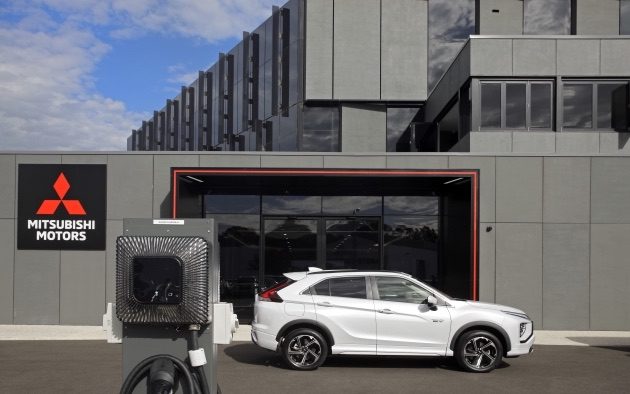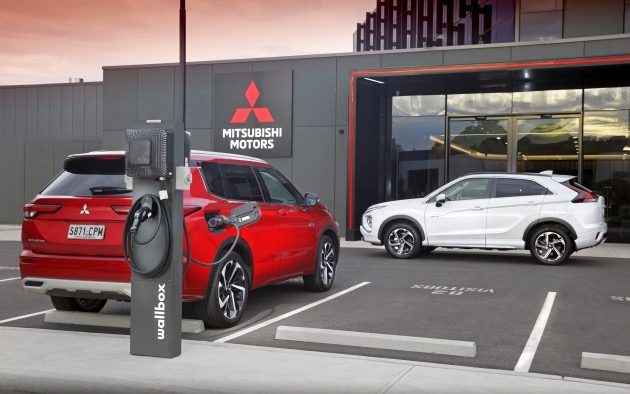Mitsubishi has claimed an Australian first after switching on bi-directional EV charging facilities at its head office in Adelaide that will allow the flow of electricity both to vehicle from grid, and from vehicle back to grid (V2G).
Mitsubishi Motors Australia (MMAL) says it has worked with EV charging specialist Jet Charge to install the two Wallbox Quasar chargers, that allow CHAdeMO charging port-enabled EVs both to recharge and to supply battery-stored energy back to the grid.
This is a big deal in Australia, where V2G is in its infancy, with – as Bryce Gaton explains here – only one CHAdeMO V2X unit approved for general use, being the Quasar, and in only one state: South Australia.

In car terms, currently the Nissan Leaf, Mitsubishi Outlander plug-in hybrid and Mitsubishi Eclipse Cross are the only EVs on the Australian market equipped for V2G, as standard, via their CHAdeMO DC charging ports. (V2G is a different kettle of fish to vehicle to load (V2L), which is currently the specialty of the Hyundai Ioniq and Kia EV6 and the BYD Atto 3– see why here.)
A bi-directional charger works by converting AC electricity from the grid to the DC electricity required by EV batteries, but it is also capable of converting this electricity back from DC to AC. As a result, the stored energy can be drawn from the vehicle’s battery and supplied externally.
As noted above, in Australia V2G has so far been approved for installation and operation in South Australia, only. So, while Mitsubishi certainly isn’t the first or only automaker to dabble in vehicle-to-X technologies, the commissioning of V2G capabilities at its Adelaide office counts as a milestone.
“We are immensely proud to be the first automotive brand in Australia with bi-directional charging capability,” said MMAL CEO Shaun Westcott in a statement on Friday.
“It’s the next step in realising our vision to deploy Mitsubishi Plug-in Hybrid EV technology and become a more environmentally sustainable operation.
“Recent power outages are a timely reminder of this technology’s value,” he added.
Westcott says the success of the Mitsubishi V2G project hinged on the technical and approvals progress made by Jet Charge.
“It is this work that allows businesses such as MMAL to explore new mobility pathways that result in improved integration between the mobility and energy sectors,” he said.
The integration of EVs into the energy market, while unlikely to be fully realised through two chargers at the Mitsubishi HQ, is increasingly being seen as a major component of future grids that will need to be managed carefully and intelligently.
Using V2G, all of these batteries on wheels have the potential to assist with grid stability during supply and demand fluctuations as well as with energy load shifting and price arbitrage – functions that promise to benefit both the grid and the consumer.

Sophie is editor of One Step Off The Grid and deputy editor of its sister site, Renew Economy. Sophie has been writing about clean energy for more than a decade.


